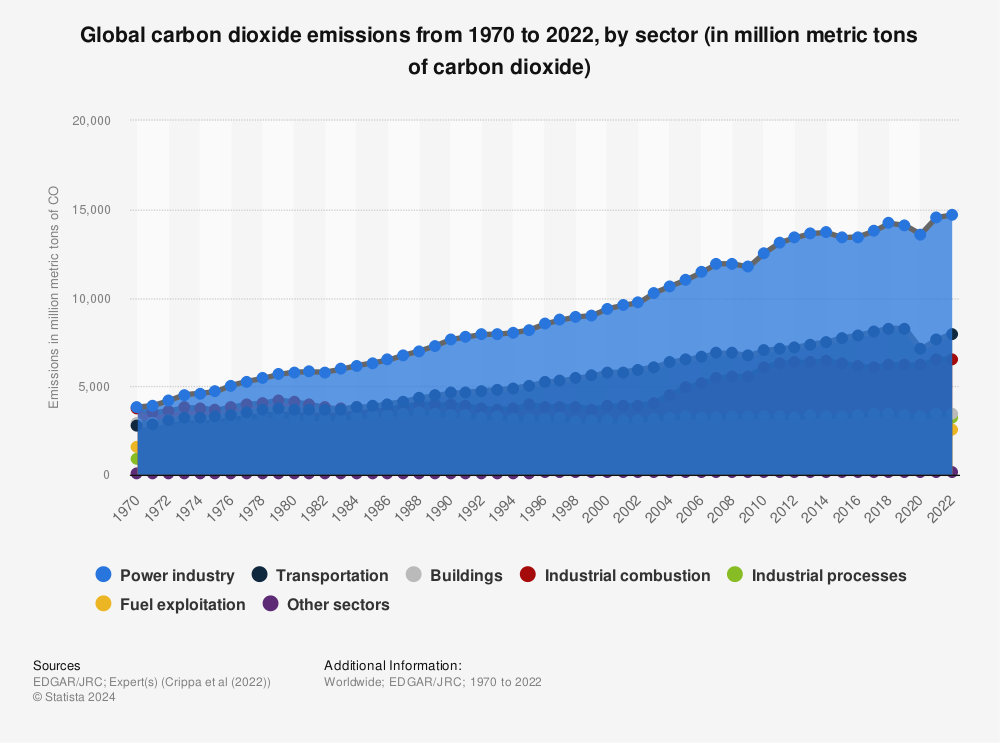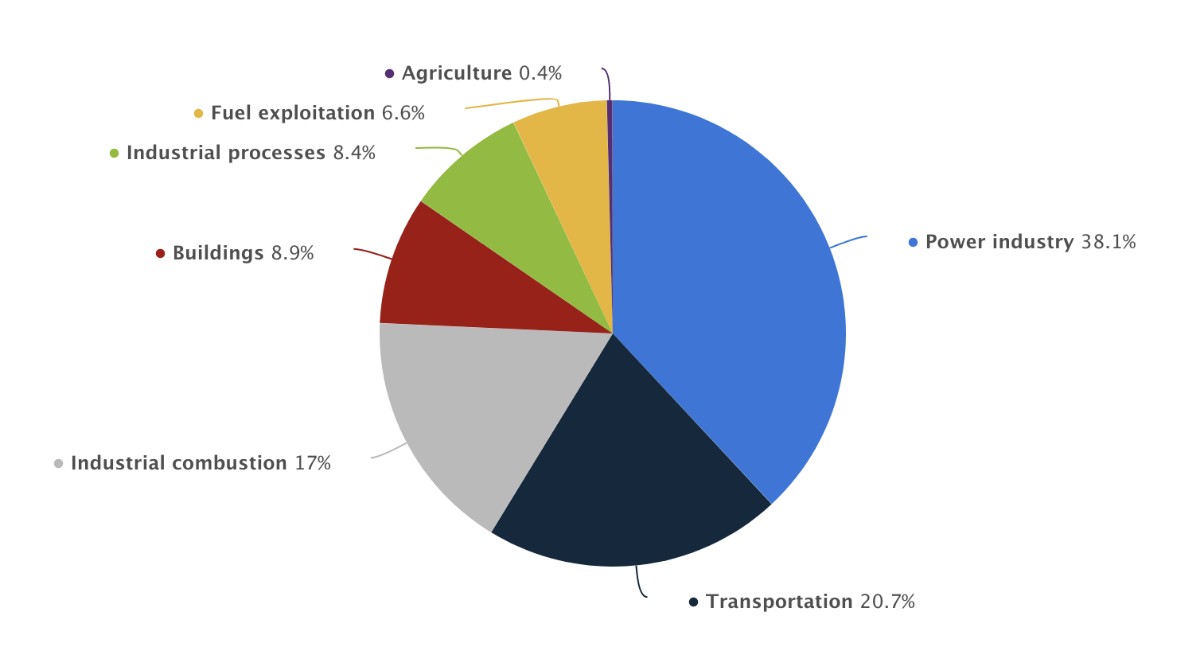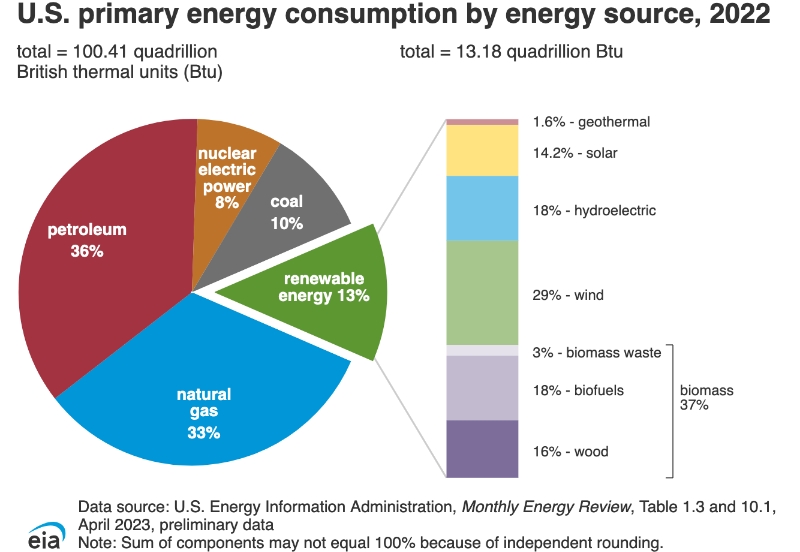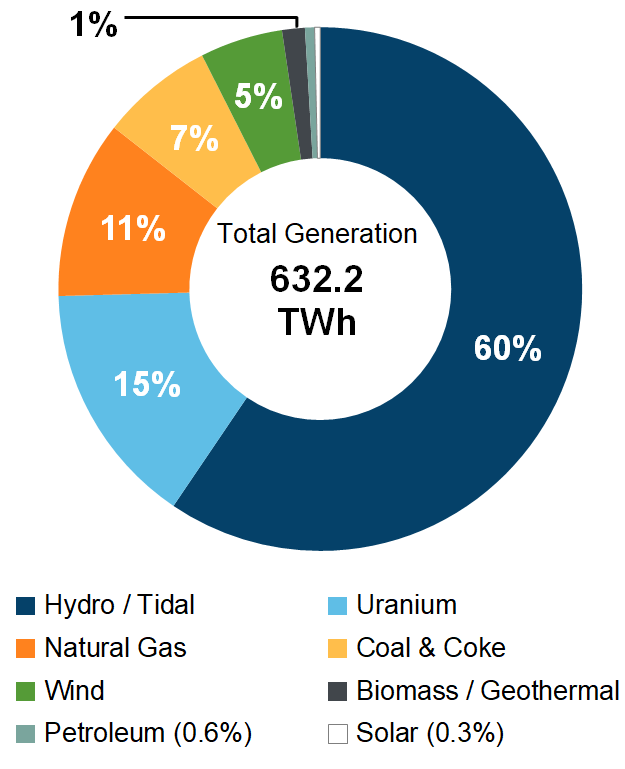Let’s Shoot the Breeze About Green Web Hosting
The unbelievable has happened. The technology sector has officially beat the airline industry for the amount of CO2 emissions released into our atmosphere each year.
How did we as a species let this happen? Technological advancement is great, and it has helped us solve some problems, but it has come at a price. Based on a 2023 study, there are around 30 billion internet-connected devices in the world. Assuming this figure will continue to grow, the IT industry will use an estimated 20% of all electricity produced by 2025, therefore emitting up to 5.5% of the world’s carbon emissions. And the fact that we continue to let it worsen demonstrates our blatant disregard for future generations and the critical state of habits all species depend on, and even disregard for our own health.
The top 7 most polluting industries (2023)
- Fuel (15.83 billion tonnes greenhouse gas (GHG) emissions per year)
- Transportation: 8.43 billion tonnes/year, 20.7% of global emissions (data: Statista)
- Passenger cars and vans: 48% of CO2 produced by transportation sector
- Commercial freight vehicles: 25% of CO2 produced by transportation sector
- Airline industry: 11% of CO2 produced by transportation sector – 0.97788 billion tonnes/year (or 977.9 million) of greenhouse gas (GHG) emissions – 2.29% of the world’s carbon emissions!
- International shipping: 10% of CO2 produced by transportation sector
- Busses: 6% of CO2 produced by transportation sector
- Rail: 1% of CO2 produced by transportation sector
- Manufacturing & construction (6.3 billion tonnes/year)
- Agriculture (5.79 billion tonnes/year)
- Food retail (3.1 billion tonnes/year)
- Fashion (2.1 billion tonnes/year)
- Technology: 1.02 billion tonnes/year – 2.4% of the pollution generated, and is expected to increase to 5.5% by the year 2025!
Together, these industries produce 42.57 billion tonnes of GHG emissions per year. Back in 1950, the world only produced 6 billion tonnes per year. Sure makes you think.
In most countries, electricity and heating rely heavily on fossil fuels (coal in particular). And when they’re burned, they release huge amounts of carbon dioxide equivalent (CO2e) into the atmosphere. In 2021 alone, air pollution contributed close to 8.7 million deaths globally. The health impacts of fossil fuel extraction are enormously detrimental to all life on our planet.
Fairwind Creative wants no part in this.
Looking the problem in the eye…
According to the U.S. Energy Information Administration, the primary power sources used throughout North America are petroleum, fossil fuels (a.k.a. “natural gas“), nuclear power, and coal, with renewable energy and nuclear energy trailing behind with a combined 21% in the United States (18.9% in Canada).
The most commonly used sources (coal and oil) are unfortunately the dirtiest, no matter how their marketers try to spin it. No good will ever come of drilling into the earth’s crust and extracting ancient minerals buried deep inside, then releasing that abundance of CO2 into our atmosphere.
What is clean energy?
Renewable energy should be where we are getting all our energy from, and majority of our energy comes from sources that dramatically increase global warming. We’ve been talking about global warming since the 1970s, so why isn’t it registering?
“Renewable energy is energy derived from natural sources that are replenished at a higher rate than they are consumed. Sunlight and wind, for example, are such sources that are constantly being replenished. Renewable energy sources are plentiful and all around us.
“Fossil fuels – coal, oil and gas – on the other hand, are non-renewable resources that take hundreds of millions of years to form. Fossil fuels, when burned to produce energy, cause harmful greenhouse gas emissions, such as carbon dioxide.”
Despite popular belief, hydropower is not clean power
Hydropower, or hydroelectric power, technology generates power by using the elevation difference, created by a dam or diversion structure, of water flowing in on one side and out, far below, on the other. Compared to fossil fuel, water seems like a cleaner option, but it’s not a net-zero carbon source, as marketing makes us assume. Water is classified as a renewable energy source, but the mechanisms required to extract energy from it certainly are not. Here’s some data that will help clarify some of the mystery and myths under the surface of water-generated energy.
According to a 2016 study by BioScience, authored by U.S., Canadian, Chinese, Brazilian, and Dutch universities and institutions, dams and the reservoirs used to store water and produce electricity were among some of the world’s largest contributors of greenhouse gas emissions, particularly methane. And this methane factor should not be ignored, as 79% of the greenhouse gas emissions from reservoirs are methane, and methane is 86 times more potent in accelerating climate change.
These dams and reservoirs also have enormous adverse impacts on fish, water quantity, nutrient loading, and riverine ecosystem dynamics, impairing the world’s carbon cycle and climate system.
 Here in British Columbia, 87.8% of our electricity is produced from hydroelectric sources (water power), with 59.3% of Canada being powered by hydro. (Comparatively, only 6.2% of the U.S. uses hydropower, with 50% of that in Washington, Oregon, and California – the Pacific Seaboard.)
Here in British Columbia, 87.8% of our electricity is produced from hydroelectric sources (water power), with 59.3% of Canada being powered by hydro. (Comparatively, only 6.2% of the U.S. uses hydropower, with 50% of that in Washington, Oregon, and California – the Pacific Seaboard.)
For the reasons above, you won’t find Fairwind boasting about our hydropower use. Since we are based in British Columbia, we have no choice but to power our operations with hydro or gas energy – hydro and gas electricity are the only public services available to residents, and unless you’re a multi-millionaire with your own wind or solar farm, you’re tied into the grid whether you like it or not. This is why Fairwind Creative offsets all of our operations with energy created from the sun and wind.
What is GREEN web hosting?
Fairwind has a strong commitment to corporate responsibility and the environmental preservation. This involves a significant shift away from our dependence on burning fossil fuel to produce electricity.
Corporate responsibility in the digital age
Web servers, and the equipment used to monitor and cool them, run 24 hours per day and consume a great deal of electricity. And so, we ensure that the data centres and web servers housing our client’s websites are powered by 100% green renewable energy.
Green web hosting, also known as eco-friendly web hosting or sustainable web hosting, refers to web hosting services that prioritize environmental sustainability and minimize their carbon footprint. Traditional data centers and web hosting operations consume significant amounts of energy, which can contribute to carbon emissions and harm the environment. Green web hosting providers take steps to mitigate these environmental impacts through various means:
Benefits and features of sustainable web hosting
When considering web hosting options, sustainability has become an increasingly vital consideration for both businesses and individuals. With the global push towards reducing our carbon footprint, sustainable web hosting offers a slew of benefits and features that distinguish it from traditional web hosting.
1. Reduced carbon footprint
One of the most immediate and tangible benefits of green web hosting is a significant reduction in carbon emissions. With the heavy reliance of data centers on electricity, opting for green web hosting ensures that the power consumed comes from renewable sources. This directly translates to fewer greenhouse gases being released into the atmosphere, making it a cleaner option and aiding in the fight against global warming.
2. Positive impact on the environment
Beyond just the carbon footprint, eco-friendly web hosting minimizes the overall environmental impact. From water conservation to reduced strain on natural resources, the environmental ripple effect is substantial. This means preserving habitats, cleaner air, and a healthier planet for future generations.
3. Supporting sustainability
By choosing sustainable web hosting, companies and individuals are actively supporting the larger global movement toward sustainability. They are investing in technologies and practices that prioritize long-term ecological balance over short-term profits, fostering an environment-friendly ethos and promoting corporate responsibility.
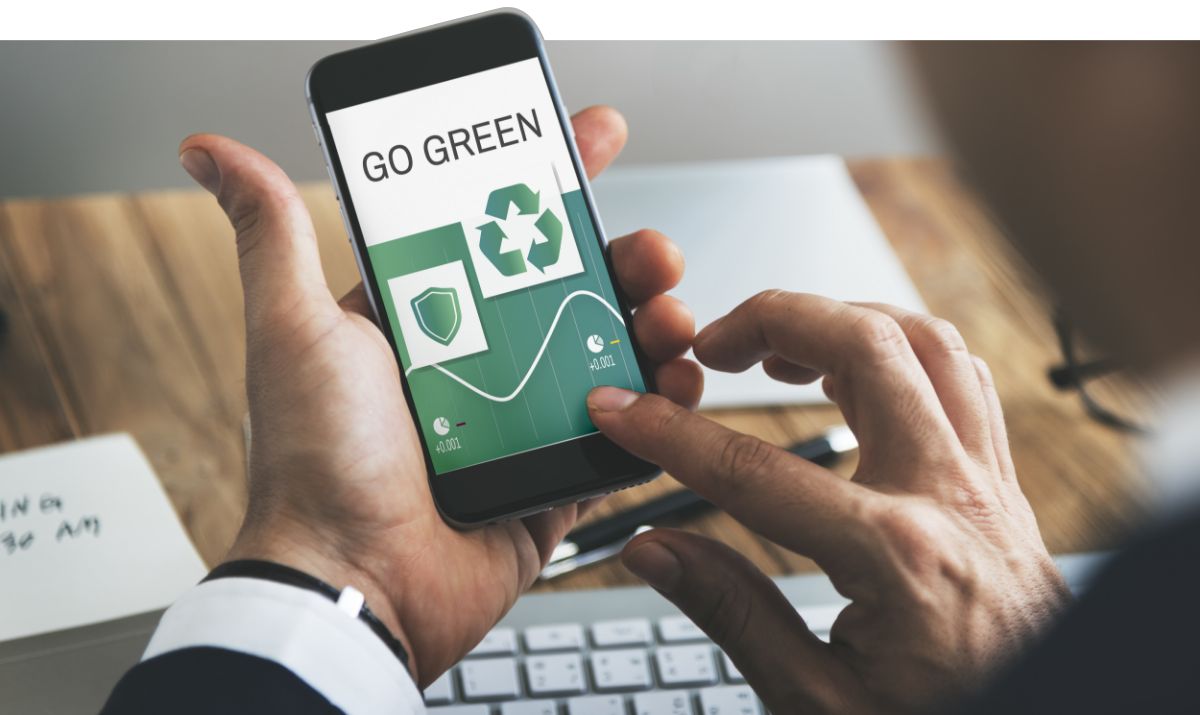
Fairwind websites are powered by 100% certified green renewable energy sources
We’re striving to do our part to keep the planet healthy. Every kilowatt of energy used to power our websites is offset with renewable wind and solar energy. The generation of electricity, and its resulting greenhouse gases and carbon emissions, is the single most contributing factor to industrial pollution in the world.
Everyone can do their part to reduce pollution. By putting equivalent clean energy back into the grid, we effectively reduce our carbon footprint and support renewable energy initiatives. By choosing green web hosting, you as a website owner can help minimize the environmental impact of your online presence, actively reduce your carbon emissions, and demonstrate your commitment to sustainability and environmental responsibility.
Why should you support businesses that use renewable electricity?
The majority of all businesses these days rely on the internet to earn a living. If you’re reading this post, then you are a consumer of energy and energy products and services. CO2 emissions derived from fossil fuels produce extremely harmful effects to the environment and all life on the planet. Acid rain, soot, smog, mercury, and particulate matter (among other pollutants) are serious detriments to our health. It’s a sobering fact. It feels defeating a lot of the time, as humanity is not making big enough strides to counteract the effects of the global warming we continue to cause. We have to make a living, and these days, there is no purely green way to do that—we’re all tied into the grid. But making some basic changes to your business and individual energy consumption will absolutely help chip away at the problem! There should be no question that, if you own a website, it should be powered by green energy.
In addition to switching to green web hosting, here are 10 easy ways that individuals and business owners can prevent electricity pollution:
- Turn off your computer when you’re not using it. Better yet, turn off the power strip (surge protector) which all your office electronics are likely plugged into. This is known as standby power, or phantom power. Many electronic devices drain energy even when powered off – such as computers, printers, TVs, cable and satellite boxes, chargers, and adapters.
- Pay with cash. Bitcoin and other cryptocurrencies emit 129 million tonnes of CO2 per year. Each time you move around your digital money (for that matter, every time you initiate a credit card transaction), you are adding to your carbon footprint. Bitcoin transactions require 402 kg of CO2, and have the climate impact as 330,000 credit card transactions (see source).
And every card payment produces 3.78 grams of CO2, which is closely the same damage caused by sending a standard email.- And while we’re on that topic, let’s add “send fewer emails” to this list. Learn more in this article »
- Stop mindlessly searching the internet or “zombie scrolling” on your smartphone. Ask yourself what you’re really getting out of that activity, other than harming the planet. How about buying a used book from a local bookstore and reading it instead?
- Limit your Netflix binging. They’ve got you hooked, but how about just treating yourself once a week, and using your other evenings each week to enrich your mind with some reading, play a board gave, take a walk outside, repair something around the house that you’ve been putting off, or spend time with friends?
- Don’t buy products wrapped in plastic. A tremendous amount of energy and fossil fuels are required to produce plastic—plastic which ends up in our soil and oceans, choking critical ecosystems. Buy adding these items to your shopping cart, you are feeding the monster and contributing to climate decline.
- Upgrade your appliances (within reason). Don’t run out and buy the latest smartphone model just because it’s new and your envious of the one your neighbour just bought. But if you’re still using an HP printer from 1998, it’s high time to recycle it responsibly and shift to an energy-certified model.
- Invest in energy storage. If you have renewable energy sources like solar panels, consider investing in energy storage solutions, such as batteries. This allows you to store excess energy for use during peak demand times or at night.
- Reduce air conditioning usage. Use ceiling fans, natural ventilation, and shading techniques to reduce the need for air conditioning during hot weather. When using air conditioning, set it to an efficient temperature and maintain your HVAC system regularly.
- Properly insulate your home and office by sealing any gaps or leaks to reduce the need for excessive heating or cooling.

Get your head out of the cloud.
The idea of cloud computing being a “green technology” is purely a myth. “The cloud” (a virtualized network and data center) is merely a leased data center owned by another person or company, and so there’s no way that cloud computing itself can be much greener than other data center technologies (source: InformationWeek.com).
Cloud computing has very real environmental effects and has become a major carbon emissions driver. It also requires large amounts of water for that cooling. It relies on vast data centers and data transmission networks. “These are responsible for nearly 1% of energy-related global greenhouse gas emissions annually and accounted for approximately 300 metric tons of carbon dioxide equivalent in 2020, according to the International Energy Association,” (Tech Target, Jun. 2023). The digital sector’s proportion of global emissions is between 3% and 4% annually. According to The Shift Project, a French nonprofit advocating for a shift to a post-carbon economy, that figure could double by 2025.
These on-demand computing (ODC) resources such as processing and storage that are accessed via the internet. Amazon Web Services (AWS), Google, and Microsoft are some of the big players offering cloud computing, branding the services as being “sustainable”. Sorry, but this is completely bogus.
Do your part with Fairwind’s green web hosting solutions
In today’s digital age, every byte, every server, and every website contributes to our collective ecological footprint. By choosing Fairwind’s green web hosting services, not only are you ensuring a robust online presence, but you’re also making a decisive stand for the planet. Our commitment to environmental responsibility means that when you host with us, you’re directly supporting a sustainable future.
Take a step forward to champion a cleaner internet by joining Fairwind’s green web hosting today!

